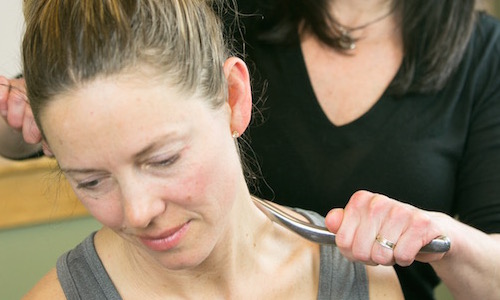Chiropractic Care for Tendonitis: A Comprehensive Guide to Relieving Pain
Exploring the Benefits of Chiropractic Treatment for Tendonitis
Tendonitis, a common and painful condition characterized by the inflammation of tendons, can cause significant discomfort and hinder daily activities. While traditional treatments like medication and physical therapy are well-known, chiropractic care emerges as a holistic approach. In this article, we delve into how chiropractic treatment can be a game-changer for those suffering from tendonitis. Tendonitis can affect any tendon, but it’s most commonly observed in the shoulders, elbows, wrists, knees, and heels – areas that are often subjected to repetitive motion and stress.
Chiropractic care, with its focus on the body’s musculoskeletal system, is a medication-free and non-invasive technique to treat musculoskeletal disorders. Chiropractors use adjustments and manipulations to relieve pain, improve joint function, and promote healing. This method not only addresses the symptoms of tendonitis but also targets the root cause of the problem.
Understanding Tendonitis: Symptoms and Causes

Tendonitis is a condition marked by the inflammation or irritation of a tendon, the thick fibrous cords that attach muscle to bone. This inflammation can lead to a range of symptoms, varying in intensity depending on the severity and location of the condition. Understanding tendonitis symptoms is crucial for timely diagnosis and treatment.
- Pain: The most common and prominent symptom of tendonitis is pain at the site of the tendon and surrounding area. This pain typically worsens when moving the affected limb or joint. In conditions like tennis elbow or golfer’s elbow, for instance, the pain may radiate from the elbow into the forearm and wrist.
- Swelling: Inflammation of the tendon can lead to visible swelling in the affected area. This swelling may develop gradually or appear soon after a strenuous activity that puts excessive strain on the tendon.
- Tenderness: The area around the inflamed tendon often becomes tender and sensitive to touch. This tenderness is usually localized to the specific area where the tendon attaches to the bone.
- Stiffness: People with tendonitis often experience stiffness in the affected area, particularly in the morning or after periods of inactivity. This stiffness can limit the range of motion and make it difficult to perform certain movements comfortably.
- Warmth and Redness: In some cases, the affected area might feel warm to the touch or show signs of redness. This is due to increased blood flow to the area as the body attempts to heal the inflamed tendon.
- Crepitus: Some individuals may notice a crunchy feeling or sound when moving the affected joint or tendon. This sensation, known as crepitus, results from the tendon rubbing against the surrounding tissue as it moves.
- Weakness: Chronic tendonitis can lead to weakening of the tendon and the associated muscle. This weakness can manifest as a reduced ability to perform activities that stress the affected tendon, such as lifting objects or climbing stairs in cases of Achilles tendonitis.
It’s important to note that these symptoms can resemble those of other conditions, so accurate diagnosis by a healthcare professional is essential. If left untreated, tendonitis can become a chronic issue, leading to further complications such as tendon rupture. Early intervention with treatments like rest, ice, physical therapy, and in some cases, medications, can effectively manage symptoms and promote healing.
Tendonitis, the inflammation of a tendon, is commonly triggered by repetitive strain and overuse of specific muscles and tendons. This condition can affect various parts of the body, with its causes varying depending on the location and the activities associated with it. Understanding these causes is essential for both prevention and effective treatment.
- Repetitive Motion: One of the primary causes of tendonitis is repetitive motion, especially in activities that involve the same body parts. This repetition can lead to overuse of certain tendons, causing strain and inflammation. Occupations that require repetitive movements, such as typing or assembly line work, can increase the risk of developing tendonitis. Similarly, athletes or individuals engaging in sports that involve repetitive motions, like tennis, golf, or running, are also susceptible.
- Age: As people age, tendons become less flexible and more prone to injury. This reduced elasticity increases the likelihood of tendonitis, especially in individuals over the age of 40.
- Injury or Sudden Increase in Activity: A sudden increase in the intensity or frequency of physical activity can strain the tendons, leading to tendonitis. This is often seen in individuals who suddenly intensify their exercise routines without adequate conditioning.
- Poor Posture or Technique: Incorrect posture during activities or poor technique in sports can put unnecessary stress on tendons. For instance, improper form while lifting weights or executing sports movements can increase the risk of tendon inflammation.
- Arthritis and Other Medical Conditions: Certain forms of arthritis, like rheumatoid arthritis, can cause inflammation of the tendons. Additionally, medical conditions like diabetes or reactions to certain medications can contribute to the development of tendonitis.
- Physical Stressors: External physical stressors, such as ill-fitting shoes in runners, can lead to tendonitis in the feet or legs. Similarly, using inadequate equipment or tools in sports or at work can contribute to the condition.
Preventing tendonitis involves understanding and mitigating these risk factors. This includes practicing proper technique in physical activities, using ergonomic tools, gradually increasing activity levels, and maintaining overall physical fitness. For those already experiencing symptoms of tendonitis, it’s crucial to address the underlying causes to effectively manage the condition and prevent its recurrence. Early intervention with rest, physical therapy, and in some cases, medical treatment, can help alleviate symptoms and promote healing.
By understanding the underlying causes and symptoms of tendonitis, chiropractors can tailor their approach to each individual. This personalized treatment plan is crucial for effective relief and long-term recovery.
Types of Tendonitis Conditions Treated by Chiropractic

Tendonitis, a condition characterized by the inflammation of tendons, manifests in various forms depending on the affected area. The tendons, robust cords of fibrous tissue that connect muscles to bones, can become inflamed due to overuse or repetitive stress, leading to pain and discomfort. Among the different types of tendonitis, some of the most common include tennis elbow, golfer’s elbow, jumper’s knee, and Achilles tendonitis.
- Tennis Elbow (Lateral Epicondylitis): Perhaps the most well-known form, tennis elbow results from overuse of the forearm muscles and tendons, often due to repetitive motions like gripping a tennis racket. However, it’s not limited to athletes – anyone who engages in activities involving repetitive arm and wrist use can develop this condition. Symptoms typically include pain and tenderness on the outside of the elbow, which may radiate down the forearm.
- Golfer’s Elbow (Medial Epicondylitis): Similar to tennis elbow but affecting the inner side of the elbow, golfer’s elbow arises from overuse of the muscles and tendons used in gripping, twisting, or lifting. While common in golfers, this condition can also affect those who perform repetitive hand motions, such as carpenters or painters.
- Jumper’s Knee (Patellar Tendonitis): This type of tendonitis impacts the tendon connecting the kneecap (patella) to the shinbone. It is prevalent among athletes involved in jumping sports, like basketball or volleyball. Symptoms include pain and swelling just below the kneecap.
- Achilles Tendonitis: Affecting the Achilles tendon, the largest tendon in the body, this condition is common among runners and athletes. It can result from sudden increases in exercise intensity or duration, poor footwear, or anatomical issues. Symptoms include pain and stiffness along the Achilles tendon, especially in the morning.
Each type of tendonitis has unique characteristics, but they all share common symptoms of chronic pain, tenderness, and sometimes swelling in the affected area. Treatment typically involves rest, ice, compression, elevation (RICE), physical therapy, and in some cases, anti-inflammatory medications or injections. Early intervention is crucial to prevent the condition from worsening or becoming chronic.
Chiropractic Techniques to Treat Tendonitis

Chiropractic care offers a multifaceted approach to treating tendonitis, incorporating various techniques that target the specific needs of the condition. Among these, spinal adjustments, shockwave therapy, and the Graston technique are particularly effective in managing and healing tendonitis. Each of these techniques has unique benefits and works synergistically to provide relief and promote recovery.
Spinal Adjustments: Spinal adjustments are a cornerstone of chiropractic care. They involve the manipulation of the vertebrae to correct alignment, relieve pressure on nerves, and improve the overall functioning of the nervous system. While tendonitis affects the tendons rather than the spine, spinal manipulation can play a significant role in treatment of back and neck pain caused by tendonitis. Proper spinal alignment can enhance the body’s natural healing abilities and improve biomechanics, reducing the strain on affected tendons. This indirect benefit can be crucial for the overall recovery process in tendonitis patients.
Shockwave Therapy: Shockwave therapy is a relatively recent innovation in treating musculoskeletal conditions like tendonitis. It uses high-energy sound waves to stimulate healing in injured tissues. This non-invasive treatment promotes regeneration and reparative processes in the tendons and surrounding tissues. Shockwave therapy is known for its effectiveness in reducing pain and increasing mobility, particularly in chronic cases of tendonitis where other treatments might have failed.
Graston Technique: The Graston Technique is a form of manual therapy that utilizes specialized stainless-steel instruments to gently massage and scrape the skin. This technique is designed to identify and treat areas exhibiting soft tissue fibrosis or chronic inflammation. In the case of tendonitis, the Graston Technique helps break down scar tissue and fascial restrictions, thereby reducing pain and increasing range of motion. It also promotes better circulation in the affected area, which is essential for reducing inflammation and facilitating healing.
Incorporating these chiropractic techniques into a comprehensive treatment plan can provide significant tendonitis pain relief. Spinal adjustments ensure optimal body mechanics and nervous system function, shockwave therapy accelerates tissue repair and reduces pain, and the Graston Technique addresses soft tissue abnormalities directly linked to tendonitis. Together, they offer a robust and effective approach to treating tendonitis, improving patient outcomes and enhancing quality of life.
Frequently Asked Questions
- Can chiropractic adjustments cure tendonitis? While chiropractic care is highly effective in managing tendonitis, it’s important to note that it’s part of a broader treatment plan. Chiropractic adjustments can significantly reduce pain and improve mobility, but they work best when combined with other treatments like physical therapy and lifestyle changes.
- How often should I see a chiropractor for tendonitis? The frequency of chiropractic visits depends on the severity of your tendonitis and your overall health. Initially, more frequent sessions may be required, which will gradually decrease as your condition improves.
- Is chiropractic care safe for all types of tendonitis? Chiropractic care is generally safe for most types of tendonitis. However, it’s crucial to consult with a healthcare professional to determine if chiropractic treatment is suitable for your specific condition.
- Can chiropractic adjustments prevent tendonitis? Regular chiropractic care can help maintain proper alignment and muscle balance, reducing the risk of developing tendonitis. It’s an effective preventive measure, especially for individuals prone to repetitive strain injuries.
- Are there any side effects of chiropractic treatment for tendonitis? Chiropractic care is a non-invasive and low-risk treatment option. Some individuals may experience mild soreness or discomfort after a session, but these symptoms are typically short-lived and part of the body’s natural healing process.
In conclusion, chiropractic care offers a viable, holistic approach to managing and preventing tendonitis. With its focus on the body’s natural ability to heal, chiropractic treatment can provide significant relief for those suffering from tendonitis, enhancing their day-to-day life and enabling them to return to their daily activities pain-free.

